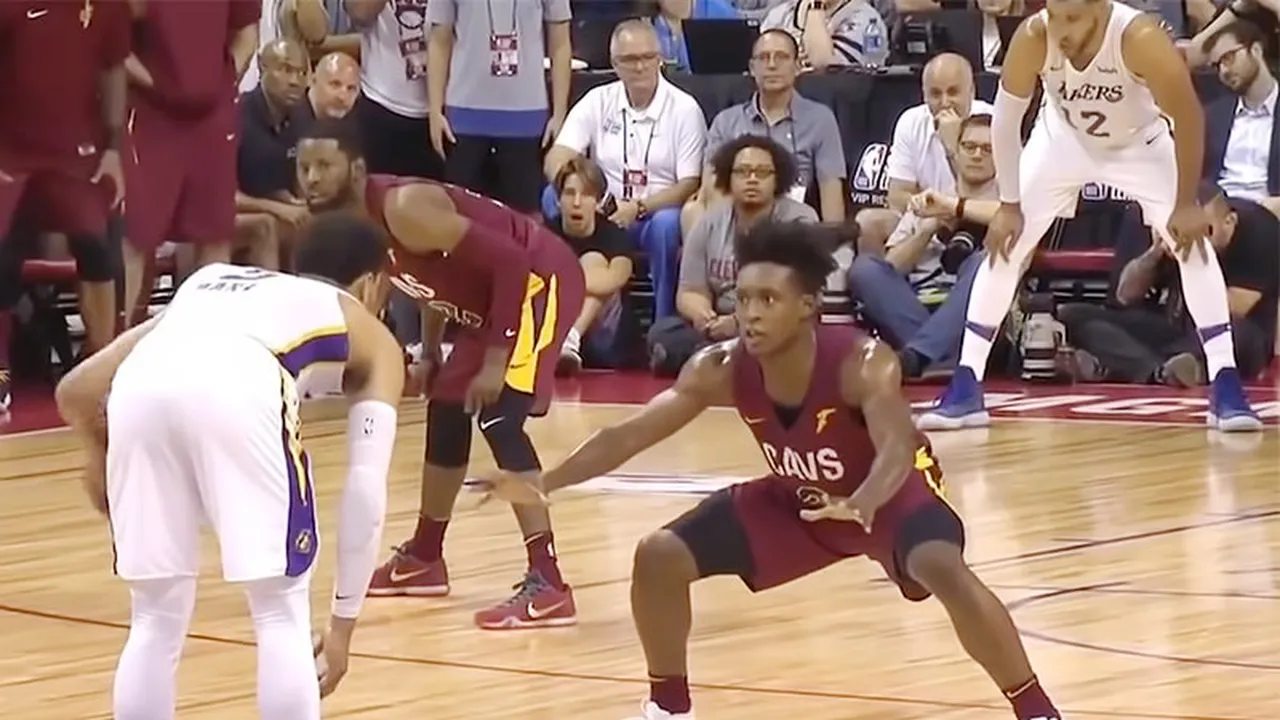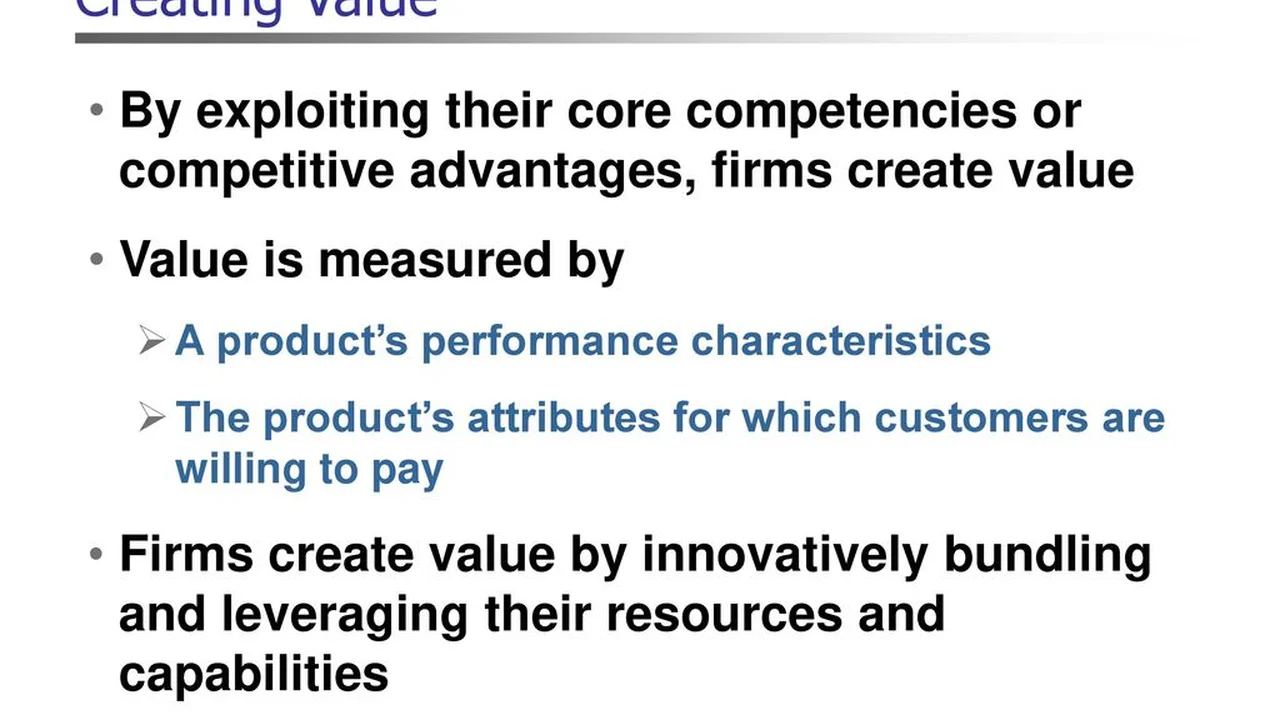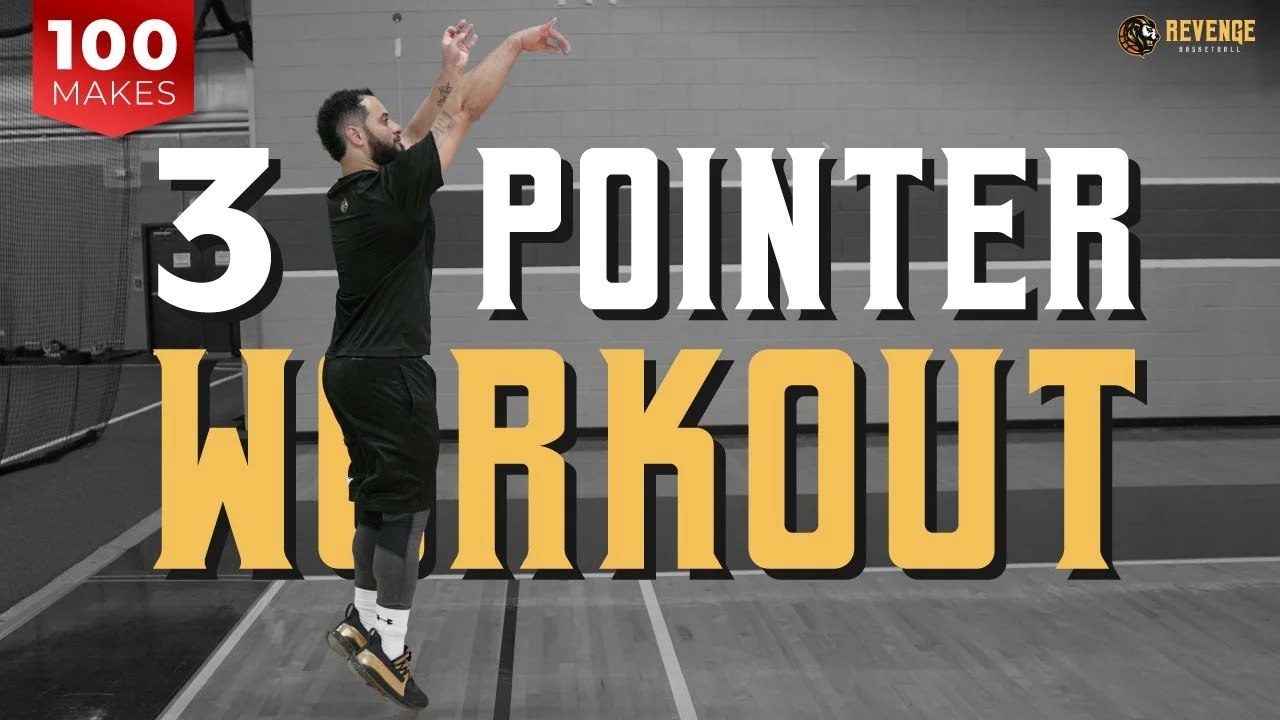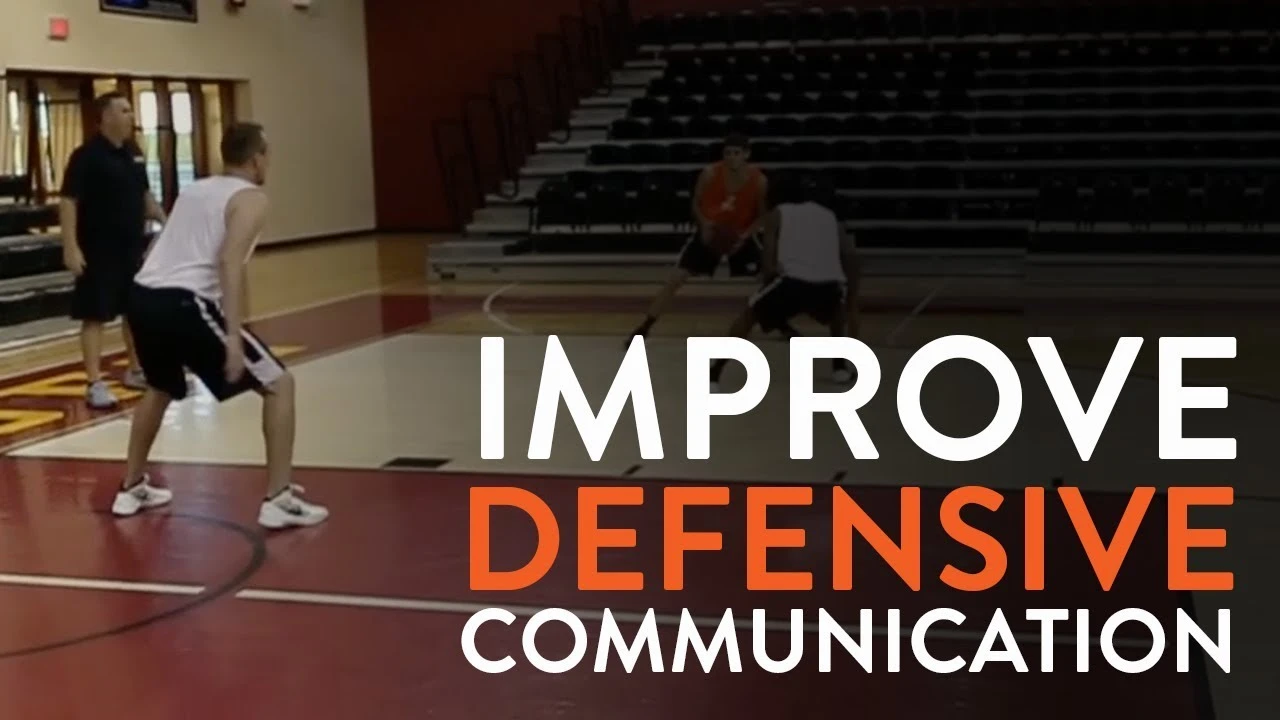Defensive Rebounding_ Securing Possession

Understanding Defensive Principles in Basketball
Basketball, at its core, is a game of offense and defense. While scoring points is crucial, a solid defensive foundation is equally, if not more, important for consistent success. Understanding the fundamental principles of defense is the first step toward building a formidable defensive team. These principles include:
- Positioning: Maintaining proper positioning between your opponent and the basket is paramount. This involves staying in a stance that allows you to quickly react to your opponent's movements and deny easy penetration.
- Footwork: Agile footwork is essential for staying in front of your opponent, sliding laterally, and recovering quickly. Practicing defensive slides and footwork drills is crucial for developing this skill.
- Communication: Effective communication is vital for coordinating defensive efforts, alerting teammates to screens, switches, and potential scoring threats. Clear and concise communication can prevent breakdowns and improve overall team defense.
- Effort and Intensity: Defense requires relentless effort and unwavering intensity. Consistently hustling, contesting shots, and fighting for rebounds are hallmarks of a strong defensive team.
The Importance of Defensive Stance and Footwork
Your defensive stance is the foundation of your defensive ability. A proper stance allows you to react quickly, maintain balance, and effectively guard your opponent. Key elements of a good defensive stance include:
- Low Center of Gravity: Bending your knees and lowering your center of gravity provides stability and allows you to move more quickly.
- Wide Base: Keeping your feet shoulder-width apart provides a solid base and enables you to maintain balance while moving laterally.
- Hands Active: Keeping your hands active disrupts your opponent's dribble, contests passing lanes, and deters shots.
- Eyes on the Ball and Your Man: Maintaining visual awareness of both the ball and your opponent allows you to anticipate movements and react accordingly.
Footwork is equally important for staying in front of your opponent and reacting to their movements. Defensive slides, backpedaling, and quick changes of direction are essential skills for effective defense. Practice these footwork drills regularly to improve your agility and reaction time.
Defensive Rebounding Securing Possession
Defensive rebounding is a critical aspect of defense. Securing the rebound prevents the opposing team from getting second-chance points and allows your team to transition into offense. Key elements of effective defensive rebounding include:
- Boxing Out: Establishing position between your opponent and the basket is crucial for securing the rebound. Use your body to create space and prevent your opponent from getting to the ball.
- Aggressive Pursuit: Once you've boxed out, aggressively pursue the rebound. Jump high, secure the ball with two hands, and protect it from being stolen.
- Team Rebounding: Rebounding is a team effort. All five players on the court should be actively involved in boxing out and pursuing rebounds.
Mastering On Ball Defense Techniques
On-ball defense involves guarding your assigned opponent and preventing them from scoring. Effective on-ball defense requires a combination of technique, athleticism, and mental toughness. Key techniques include:
- Staying in Front: Your primary goal is to stay between your opponent and the basket, denying them a direct path to the hoop.
- Contesting Shots: Close out quickly on shooters and contest their shots without fouling.
- Denying Penetration: Prevent your opponent from driving to the basket by cutting off their driving lanes and forcing them to pass the ball.
- Applying Pressure: Apply constant pressure to the ball handler to disrupt their rhythm and force turnovers.
Off Ball Defense Reading the Play
Off-ball defense involves guarding your assigned opponent when they don't have the ball. This requires constant vigilance, anticipation, and communication. Key elements of effective off-ball defense include:
- Reading the Ball and Your Man: Constantly monitor the position of the ball and your assigned opponent to anticipate their movements and potential scoring opportunities.
- Helping and Recovering: Be prepared to help your teammates when they are beat and quickly recover to your assigned opponent.
- Denying Passing Lanes: Position yourself to intercept passes and prevent your opponent from receiving the ball in scoring position.
- Communication: Communicate with your teammates to alert them to screens, cuts, and potential scoring threats.
The Art of Blocking Shots Without Fouling
Blocking shots can be a game-changing defensive play, but it's important to do it without fouling. Key techniques for blocking shots without fouling include:
- Timing: Jump at the peak of the shooter's jump shot and time your block to coincide with the release of the ball.
- Verticality: Maintain verticality when blocking shots to avoid making contact with the shooter's body.
- Reaching Up: Reach up with your hand to block the shot, rather than reaching across the shooter's body.
- Focus on the Ball: Focus your attention on the ball, rather than the shooter's arm or body.
Defensive Drills to Improve Skills
Consistent practice is essential for developing strong defensive skills. Here are some effective defensive drills:
- Defensive Slides: Practice defensive slides to improve your lateral movement and agility.
- Closeout Drills: Practice closing out on shooters to improve your speed and technique.
- Rebounding Drills: Practice boxing out and rebounding to improve your rebounding skills.
- 1-on-1 Defense: Practice 1-on-1 defense to improve your on-ball defense skills.
- 2-on-2 Defense: Practice 2-on-2 defense to improve your team defense skills.
Analyzing Defensive Stats for Improvement
Analyzing defensive statistics can provide valuable insights into your team's strengths and weaknesses. Key defensive stats to track include:
- Opponent's Points Per Game: This stat measures your team's overall defensive effectiveness.
- Opponent's Field Goal Percentage: This stat measures your team's ability to contest shots.
- Rebounds Per Game: This stat measures your team's rebounding effectiveness.
- Steals Per Game: This stat measures your team's ability to force turnovers.
- Blocks Per Game: This stat measures your team's shot-blocking ability.
Defensive Strategies for Different Opponents
Different opponents require different defensive strategies. Here are some common defensive strategies:
- Man-to-Man Defense: In man-to-man defense, each player is responsible for guarding a specific opponent.
- Zone Defense: In zone defense, players are responsible for guarding a specific area of the court.
- Press Defense: In press defense, the team applies pressure to the ball handler throughout the entire court.
- Trap Defense: In trap defense, the team double-teams the ball handler in a specific area of the court.
Defensive Play Calling and Communication
Effective communication is essential for coordinating defensive efforts. Teams should have a system for calling out defensive plays and communicating defensive assignments. Common defensive calls include:
- "Switch!": This call indicates that players should switch defensive assignments.
- "Screen!": This call alerts teammates to an upcoming screen.
- "Help!": This call indicates that a teammate needs help on defense.
- "Rotate!": This call indicates that players should rotate defensive assignments.
The Mental Aspect of Defense Focus and Discipline
Defense requires mental toughness, focus, and discipline. Players must be willing to work hard, stay focused on their assignments, and avoid making mental mistakes. Key mental aspects of defense include:
- Concentration: Maintaining focus throughout the game is crucial for effective defense.
- Discipline: Following the defensive game plan and avoiding unnecessary fouls are essential for success.
- Resilience: Bouncing back from mistakes and maintaining a positive attitude are important for overcoming adversity.
- Toughness: Defense requires physical and mental toughness. Players must be willing to fight for every possession.
Defensive Leadership Setting the Tone
Strong defensive leadership is essential for building a winning team. Defensive leaders set the tone for the team's defensive effort and hold their teammates accountable. Qualities of a good defensive leader include:
- Communication: Effective communication is crucial for coordinating defensive efforts and motivating teammates.
- Effort: Leading by example and consistently hustling on defense is essential for setting the tone.
- Accountability: Holding teammates accountable for their defensive assignments and effort is important for maintaining standards.
- Positivity: Maintaining a positive attitude and encouraging teammates can help overcome adversity.
Defensive Equipment and Gear for Optimal Performance
Having the right equipment can enhance your defensive performance and protect you from injuries. Here's a look at some essential defensive gear:
- Basketball Shoes: High-quality basketball shoes provide ankle support, cushioning, and traction, which are crucial for quick movements and preventing injuries.
- Product Recommendation: Nike LeBron Witness 7 - Known for its excellent ankle support and responsive cushioning.
- Use Case: Ideal for players who need stability and responsiveness for aggressive defensive plays.
- Pricing: Approximately $100 - $130.
- Comparison: Compared to the Adidas Dame 8, the LeBron Witness 7 offers better ankle support, while the Dame 8 provides slightly better court feel.
- Ankle Braces: Ankle braces provide additional support and stability to prevent ankle sprains.
- Product Recommendation: McDavid 195 Ankle Brace - Offers excellent support without restricting movement.
- Use Case: Suitable for players with a history of ankle injuries or those seeking extra protection.
- Pricing: Approximately $30 - $50.
- Comparison: Compared to the Zamst A2-DX, the McDavid 195 is more affordable and easier to wear, while the Zamst A2-DX offers superior support for severe ankle instability.
- Mouthguards: Mouthguards protect your teeth and jaw from impact during physical play.
- Product Recommendation: Shock Doctor Gel Max Mouthguard - Provides a comfortable and protective fit.
- Use Case: Essential for all basketball players to prevent dental injuries.
- Pricing: Approximately $10 - $20.
- Comparison: Compared to the SISU Aero Mouthguard, the Shock Doctor Gel Max offers more cushioning, while the SISU Aero is thinner and more comfortable for some users.
- Knee Pads: Knee pads provide protection and cushioning for your knees during dives and floor burns.
- Product Recommendation: Nike Pro Combat Knee Sleeves - Offers lightweight protection and compression.
- Use Case: Ideal for players who frequently dive for loose balls or play on hard courts.
- Pricing: Approximately $25 - $40.
- Comparison: Compared to the McDavid Hex Knee Pads, the Nike Pro Combat offers a more streamlined fit, while the McDavid Hex provides more substantial padding.
- Compression Shorts: Compression shorts provide support to your muscles, improve circulation, and reduce muscle fatigue.
- Product Recommendation: Under Armour HeatGear Compression Shorts - Provides excellent support and moisture-wicking properties.
- Use Case: Suitable for all players to improve performance and reduce muscle soreness.
- Pricing: Approximately $25 - $40.
- Comparison: Compared to the Adidas Techfit Compression Shorts, the Under Armour HeatGear offers a slightly more compressive fit, while the Adidas Techfit is known for its breathability.
Advanced Defensive Concepts and Strategies
Beyond the fundamentals, mastering advanced defensive concepts can give your team a significant edge. These strategies require a high level of understanding, communication, and execution.
- Help-Side Rotation: This involves players rotating to provide help defense when a teammate is beaten. It requires quick recognition and seamless rotation to prevent open shots or easy baskets.
- Denying the Ball: This strategy aims to prevent the opponent from receiving the ball in advantageous positions. It involves aggressive on-ball pressure and anticipating passing lanes.
- Controlling the Pace: Defensive strategies can be used to control the pace of the game. For example, a full-court press can speed up the game, while a pack-line defense can slow it down.
- Defensive Matchups: Carefully selecting defensive matchups based on player strengths and weaknesses can be crucial. For example, assigning your best defender to the opponent's top scorer.
Defensive Film Study and Game Preparation
Analyzing film and preparing for each opponent is essential for maximizing defensive effectiveness. This involves identifying the opponent's tendencies, strengths, and weaknesses, and developing a game plan to exploit them.
- Identifying Opponent Tendencies: Watch film to identify the opponent's preferred offensive sets, scoring patterns, and individual player tendencies.
- Developing a Defensive Game Plan: Based on your analysis, develop a defensive game plan that focuses on neutralizing the opponent's strengths and exploiting their weaknesses.
- Communicating the Game Plan: Clearly communicate the defensive game plan to your players, ensuring they understand their roles and responsibilities.
- Adjusting During the Game: Be prepared to adjust your defensive game plan during the game based on the opponent's adjustments and the flow of the game.
Defensive Mindset and Team Culture
Building a strong defensive team requires a specific mindset and a positive team culture. This involves fostering a commitment to hard work, discipline, and selflessness. Key elements of a defensive mindset and team culture include:
- Effort and Intensity: Emphasize the importance of consistent effort and unwavering intensity on defense.
- Teamwork and Selflessness: Encourage players to prioritize team defense over individual accolades.
- Accountability and Discipline: Hold players accountable for their defensive assignments and effort.
- Positive Attitude and Resilience: Foster a positive attitude and encourage players to bounce back from mistakes.
The Evolution of Defensive Strategies in Basketball
Defensive strategies in basketball have evolved significantly over time. From the early days of simple man-to-man defense to the complex zone defenses and trapping schemes of today, coaches and players have constantly sought new ways to gain a defensive advantage.
- Early Basketball: In the early days of basketball, man-to-man defense was the dominant strategy.
- The Rise of Zone Defense: Zone defense gained popularity as coaches sought to counter dominant offensive players and teams.
- Modern Basketball: Modern basketball features a wide variety of defensive strategies, including man-to-man, zone, press, and trap defenses.
- The Future of Defense: The future of defense in basketball will likely involve even more sophisticated strategies and a greater emphasis on player versatility and athleticism.
Defensive Success Stories and Case Studies
Examining successful defensive teams and strategies can provide valuable insights and inspiration. Here are a few examples of teams known for their exceptional defense:
- The Boston Celtics (1980s): Led by Larry Bird and Kevin McHale, the Celtics were known for their tenacious defense and team-oriented approach.
- The Detroit Pistons (Late 1980s): The "Bad Boys" Pistons were renowned for their physical and intimidating defense.
- The San Antonio Spurs (2000s): The Spurs, under Gregg Popovich, built a dynasty on a foundation of strong defense and team play.
- The Chicago Bulls (1990s): With Michael Jordan and Scottie Pippen leading the way, the Bulls were a dominant defensive force.
Staying Updated on Defensive Trends and Innovations
The game of basketball is constantly evolving, and defensive strategies are no exception. It's important to stay updated on the latest trends and innovations to maintain a competitive edge. Resources for staying informed include:
- Basketball Coaching Clinics: Attending coaching clinics provides opportunities to learn from experienced coaches and discuss new defensive strategies.
- Basketball Websites and Blogs: Numerous websites and blogs offer articles, videos, and analysis of defensive strategies.
- Basketball Books and DVDs: Books and DVDs provide in-depth instruction on defensive techniques and strategies.
- Networking with Other Coaches: Connecting with other coaches allows you to share ideas and learn from their experiences.
Developing a Comprehensive Defensive Philosophy
Ultimately, building a successful defensive team requires developing a comprehensive defensive philosophy that aligns with your team's strengths, weaknesses, and goals. This philosophy should guide your defensive strategies, training methods, and player development.
- Assess Your Team's Strengths and Weaknesses: Identify your team's strengths and weaknesses on defense to determine the best defensive strategies.
- Set Clear Defensive Goals: Establish clear defensive goals for your team, such as limiting opponent scoring, forcing turnovers, and controlling the boards.
- Develop a Defensive System: Create a defensive system that is easy to understand and implement.
- Continuously Evaluate and Adjust: Continuously evaluate your defensive system and make adjustments as needed based on your team's performance and the opponent's tendencies.
Specific Product Recommendations with Use Cases and Pricing
Let's delve deeper into specific product recommendations that can significantly enhance your defensive capabilities. Remember, choosing the right gear is crucial for both performance and injury prevention.
- Agility Ladder: A fantastic tool for improving foot speed, agility, and coordination.
- Product Recommendation: Pro Agility Ladder by SKLZ - Durable and adjustable for various drills.
- Use Case: Ideal for improving footwork, quickness, and lateral movement, essential for staying in front of your opponent.
- Pricing: Approximately $20 - $30.
- Comparison: Compared to cheaper, less durable ladders, the SKLZ Pro Agility Ladder is built to last and withstand rigorous training.
- Resistance Bands: Excellent for strengthening muscles used in defensive movements.
- Product Recommendation: Tribe Premium Resistance Bands Set - Offers a variety of resistance levels for progressive training.
- Use Case: Great for strengthening hip abductors, glutes, and core muscles, crucial for maintaining a strong defensive stance and lateral movement.
- Pricing: Approximately $25 - $40.
- Comparison: Compared to single resistance bands, a set like the Tribe Premium offers versatility and allows you to progressively increase resistance as you get stronger.
- Cone Markers: Essential for setting up drills and defining boundaries.
- Product Recommendation: Crown Sporting Goods 6-Inch Training Cones - Durable and highly visible.
- Use Case: Used to mark boundaries for defensive slide drills, agility drills, and other training exercises.
- Pricing: Approximately $15 - $25 for a set of 50.
- Comparison: Compared to smaller, less visible cones, the 6-inch Crown Sporting Goods cones are easier to see and provide a clear visual marker.
- Weighted Vest: Adds resistance to your workouts, improving strength and explosiveness.
- Product Recommendation: Hyperwear Hyper Vest PRO - A comfortable and adjustable weighted vest.
- Use Case: Can be worn during defensive drills to increase the intensity and improve strength and endurance.
- Pricing: Approximately $200 - $300.
- Comparison: Compared to bulky, uncomfortable weighted vests, the Hyperwear Hyper Vest PRO is designed for comfort and freedom of movement.
- Jump Rope: A simple yet effective tool for improving foot speed, coordination, and cardiovascular fitness.
- Product Recommendation: Survival and Cross Speed Jump Rope - Designed for speed and durability.
- Use Case: A great warm-up exercise and a valuable tool for improving foot speed and agility.
- Pricing: Approximately $15 - $25.
- Comparison: Compared to basic jump ropes, the Survival and Cross Speed Jump Rope is designed for faster rotations and improved performance.
The Future of Defensive Training and Technology
The future of defensive training will likely involve the integration of technology to provide more personalized and effective training methods. This includes:
- Motion Capture Technology: Motion capture technology can be used to analyze player movements and provide feedback on technique.
- Virtual Reality Training: Virtual reality training can simulate game situations and allow players to practice defensive skills in a safe and controlled environment.
- Wearable Sensors: Wearable sensors can track player performance metrics such as speed, acceleration, and heart rate, providing valuable data for optimizing training programs.
- AI-Powered Coaching: Artificial intelligence can be used to analyze game film and provide personalized coaching recommendations.
The Importance of Continuous Learning and Adaptation
The world of basketball is constantly changing, and it's essential to embrace continuous learning and adaptation to stay ahead of the curve. This involves:
- Staying Informed: Stay updated on the latest defensive trends and innovations by reading articles, attending coaching clinics, and networking with other coaches.
- Experimenting with New Strategies: Don't be afraid to experiment with new defensive strategies and techniques.
- Analyzing Your Performance: Continuously analyze your team's defensive performance and make adjustments as needed.
- Seeking Feedback: Seek feedback from players, coaches, and other experts to identify areas for improvement.
By embracing these principles, you can build a formidable defensive team that is capable of competing at the highest level.
:max_bytes(150000):strip_icc()/277019-baked-pork-chops-with-cream-of-mushroom-soup-DDMFS-beauty-4x3-BG-7505-5762b731cf30447d9cbbbbbf387beafa.jpg)





